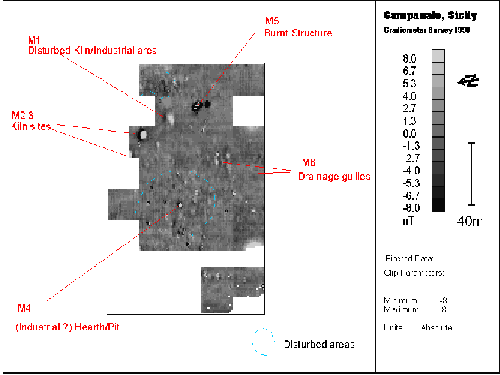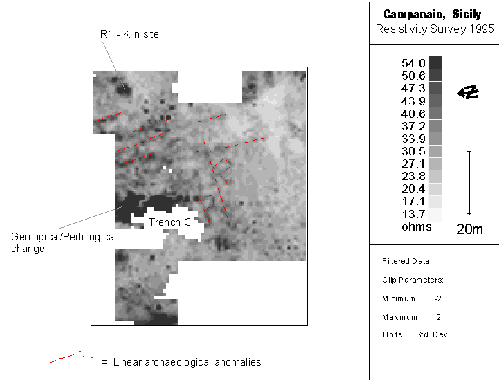
Full image
The great majority of the western and north-eastern sectors of the surveyed area display marked and extensive magnetic disturbance not entirely inconsistent with either a settlement area or one that has undergone much disturbance agriculturally. The anomalies marked M1-6 are the principal areas of interest. The most significant anomalies at this stage would appear to be M2 and 3 which recorded such a characteristic thermoremnant signal that immediately suggested a kiln or small furnace. Excavations (Trench F,) subsequently confirmed that the more easterly of these maculae was indeed a kiln. Further to the east a similar anomaly (M1) may be associated with industrial activity, it's form however is much more irregular and is difficult to interpret. The intense burning in the location of Trench E was clearly picked up by the magnetometer (M5) and would appear to the result of a conflagration which led to the destruction of a fifth century AD building
